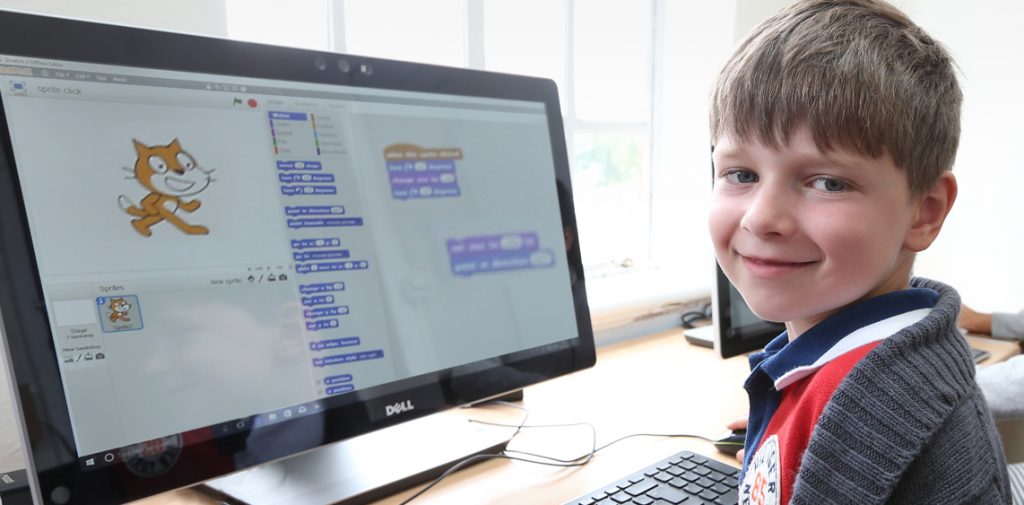Introduction
In today’s digital age, introducing children to coding not only cultivates valuable technical skills but also enhances their logical reasoning and problem-solving abilities. Coding with platforms like Python and Scratch can be an enjoyable and effective way to nurture these cognitive skills from an early age. In this blog, we’ll explore creative ways to develop logical reasoning in kids using these programming languages.
1. Getting Started with Basics:
Before diving into coding, it’s important to introduce kids to the fundamental concepts of logical reasoning. You can begin by explaining the idea of “if-then” logic, which forms the basis of programming. This is as simple as saying, “If it’s raining outside, then take an umbrella.” This prepares them for the conditional statements they’ll encounter in coding.
2. Exploring Scratch for Logical Fun:
Scratch, a visual programming language, is perfect for introducing younger children to logical reasoning. Start with basic commands like “move,” “turn,” and “repeat.” Encourage them to create animated stories or games where characters follow specific instructions. For instance, they can make a character move across the screen, turn at a specific point, and react to certain conditions.
3. Unleashing Creativity with Scratch Projects:
Guide kids to build interactive projects that demand logical thinking. For example, they can create a game where a character navigates a maze using loops and decision-making blocks. The process of arranging commands in a sequence and predicting outcomes nurtures their logical reasoning skills. As they experiment, they’ll learn that a slight change in instructions can lead to different outcomes.
4. Python Adventures in Logical Thinking:
Transitioning to Python, a text-based language, might seem daunting, but it opens up new opportunities for logical reasoning. Begin with simple text-based games like “Rock, Paper, Scissors.” By coding the game’s rules, kids learn about variables, conditions, and the concept of winning or losing based on logical comparisons.
5. Collaborative Coding Challenges:
Engage kids in collaborative coding challenges that require them to work together to solve problems. For example, they can pair up to write a Python program that calculates the average of a list of numbers. This exercise encourages them to break down complex tasks into smaller logical steps and then combine their efforts for a successful outcome.
6. Puzzle Solving for Brain Teasers:
Introduce logic puzzles that tickle their brains and demand creative problem-solving. These puzzles could be incorporated into coding challenges. For instance, provide them with a scenario where a character needs to collect items in a specific order while avoiding obstacles. Encourage kids to use loops and conditional statements to solve the puzzle.
7. Real-Life Simulations:
Bring real-life scenarios into coding by asking kids to create simulations. For instance, they could simulate the growth of a plant over time, taking into account factors like sunlight and water. This exercise requires them to think logically about cause-and-effect relationships.

Tailoring Logical Reasoning Development to Different Age Groups
Birth – 4 Years: Hands-On Play and Logic Toys For the youngest kids, focus on hands-on play and interactive toys. Toys that they can touch, build, and mold with their hands help them understand cause and effect. Logic toys like puzzles and shape sorters introduce simple patterns, while open-ended building sets encourage creativity and experimentation.
5-10 Years Old: Guiding Step-by-Step Deduction and Forming Opinions In this age group, help kids break down questions into smaller steps. Guide them through the process of deduction, showing them how to solve problems by taking things one step at a time. Encourage them to form their own opinions about the world around them. This process helps them challenge assumptions and become more open-minded critical thinkers.
11-13 Years Old: Independence, Extracurriculars, and Modeling Logic As kids become more independent, support their interests in extracurricular activities. These experiences enrich their perspective and expose them to new ideas. Model strong logical reasoning skills by sharing how you make decisions and solve problems. This provides them with practical examples to learn from.
14-15 Years Old: Expanding Horizons and Making Decisions For older teenagers, encourage them to diversify their sources of information. Challenge them to engage with a variety of content, from books to news to different media. This expands their understanding of different perspectives. Also, give them opportunities to make decisions and face the consequences. This helps them develop better reasoning skills and prepares them for future challenges.
Conclusion:
Coding isn’t just about writing lines of code; it’s a powerful tool to develop logical reasoning skills in kids. Through platforms like Scratch and Python, children learn to think step by step, make decisions based on conditions, and solve problems creatively. As they explore the world of coding, they’re unknowingly strengthening their logical thinking abilities, which will undoubtedly serve them well in various aspects of life. So, encourage your little ones to embark on this coding adventure and watch their logical reasoning skills flourish!
Our live, online coding classes for kids teach kids with engaging visuals, hands-on projects, and homework help. It’s a fantastic way to improve logical reasoning skills in a safe, supportive environment. Book Free Class .